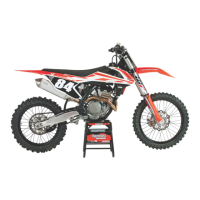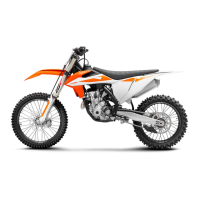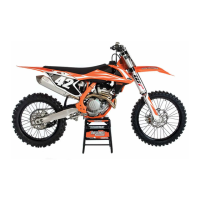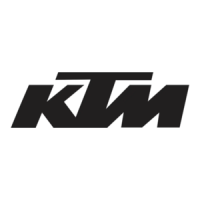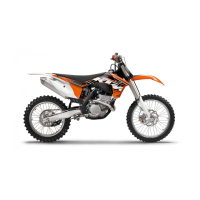Why is my KTM 250 SX-F 2017 Motorcycle engine overheating?
- CChristopher ZhangJul 29, 2025
If your KTM Motorcycle engine overheats, check the coolant level and inspect the cooling system for any leaks. Ensure there's sufficient airflow, and if standing still, switch off the engine. Clean the radiator fins if they are dirty. If there is foam formation in the cooling system, drain and refill the coolant. Finally, inspect the radiator hose; if it's bent, replace it.
